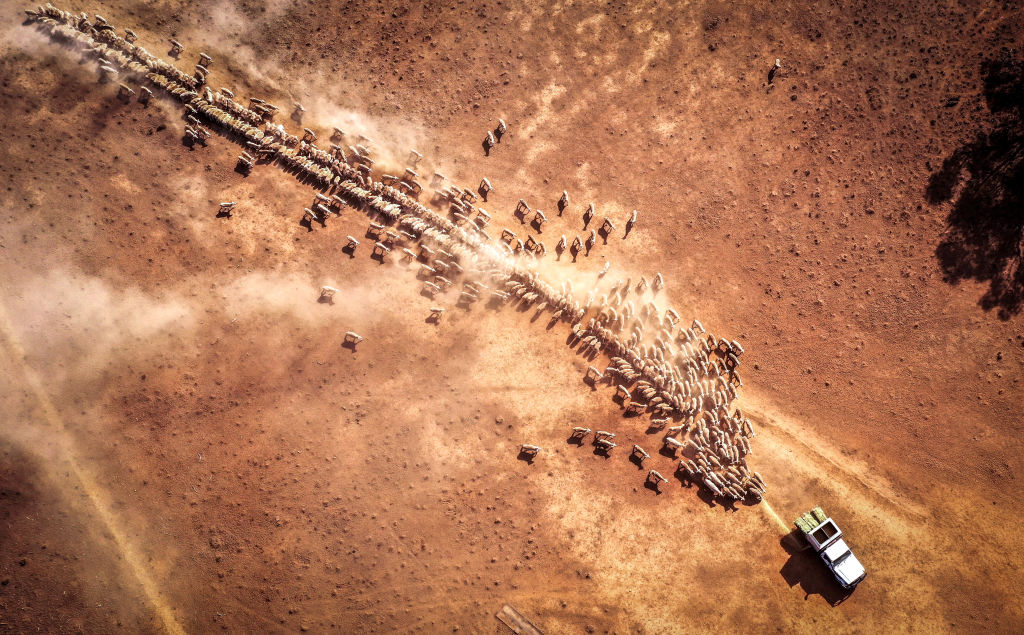
The Australian government’s interpretation of what constitutes a drought must change to cope with the pressures of a more variable and arid climate.
In his foreword to the government’s drought response, resilience and preparedness plan, Drought Minister David Littleproud
writes, ‘We have continued to be agile, responding where we need to and how we need to as we wait for the rain we desperately need.’
Drought is a term that has long been used to describe low water availability in Australia. It is a persistent feature of Australia’s natural environment. For centuries the country’s climate has been dominated by variable weather conditions, with cycles of prolonged dry spells followed by flooding. This year, after one of the worst droughts on record, unusually high quantities of rain fell over Australia, causing major flooding across the country.
It would be tempting to argue that, despite climate change, Australian droughts will continue to be cyclical, recurring events.
But in recent years droughts have
become more severe and
less predictable. The widespread drought across Victoria, New South Wales and Queensland—exacerbated by unusually high temperatures driven by climate change and
evolving oceanic weather patterns—led to a noticeable increase in
evaporation rates, which
reduced soil moisture and dried vegetation. A grim consequence was the intensity of last summer’s bushfires.
Data from the Bureau of Meteorology demonstrates that Australia’s weather is becoming hotter and drier. Parts of the country are becoming
more arid, and this is putting more pressure on our economy and infrastructure and on our assumptions about our way of life.
The Australian government has spent
billions of dollars assisting regional communities affected by water shortages. The situation seems to have
worsened; rains that once could be relied on to provide relief
no longer seem to be as consistent.
These conditions raise uncomfortable questions about how Australia will manage future droughts. Words such as ‘extreme’ and ‘recordbreaking’ are now used to describe long dry periods, but at what point does our understanding of what is and isn’t a drought need to change? Does Australia need to define a new climate reality for itself?
Australia is experiencing a widespread drying trend that is blurring the distinction between ‘drought’ and ‘aridity’. A drought is temporary, while aridity is a permanent feature of the natural landscape. Maintaining this differentiation between the two terms is becoming more difficult: some parts of Australia have been in ‘
drought’ since 2013.
Drought and aridity constitute different problems that require very different policy responses. Droughts tend to be managed by developing policies with a short-term outlook, such as government handouts to farmers and water buyback schemes. A trend of deepening and broadening arid conditions, however, requires a different set of policies with a long-term view.
The Australian government’s most recent drought plan, released in 2019, includes a future drought fund and national landcare program. These policy settings provide a good indicator of how it’s adapting its thinking about the drying climate.
However, ‘drought’ and ‘aridity’ seem to be used interchangeably in government planning and scientific reports. The government’s drought plan recognises that farmers ‘operate in a largely arid continent’. However, elsewhere in the plan, the word ‘arid’ is replaced by ‘drought’.
The CSIRO’s
State of the climate 2016 report predicts that southern continental Australia will spend more time in drought. Although the CSIRO doesn’t clarify over what timeframe this will happen, the report’s conclusion does signal a trend towards a more arid climate, even though the word ‘arid’ is not used once.
The failure to note the difference between drought and aridity can have dire consequences for policymaking and legislative responses to our changing conditions.
The most recent significant example has been the mismanagement of the Murray–Darling river basin, which for decades has suffered from a lack of efficient and productive cooperation between federal and state authorities to deal with consistently low rainfall, high evaporation rates and unsustainable water use.
Of course, drought policy isn’t just influenced by the vocabulary we use. But being clear about what is happening to our climate would go a long way towards improving decision-making and legislation. It would also help narrow the widening gap between Australians’ perceptions of drought and the reality on the ground.
The human and financial costs of Australia’s drying trend will continue to increase in coming years. With one in seven Australian jobs
dependent on farming, the economy relies heavily on agriculture. This is reflected in unsustainable government policies that still prioritise an increase in the nation’s agricultural output.
It’s becoming more important than ever for Australians to think now about what a drying climate means for them, their jobs, their communities and their futures. If our perception of drought doesn’t change, we will increasingly struggle to cope with the demands of a more arid climate.
Australia can’t look only at how climate change is affecting water availability and drought. To properly address the effects of climate change, and the impact of low water availability on our economy and way of life, environmental management will need to become a core focus of government policy.
The government’s most recent drought response plan suggests this is starting to happen, but the measures and programs being implemented are not the full solution.
We can’t focus simply on reacting to these worsening conditions, especially if our response addresses only one part of a much bigger problem. We need a proactive policy structure and debate which engages with the direct effects of climate change, not just drought.
 Print This Post
Print This Post